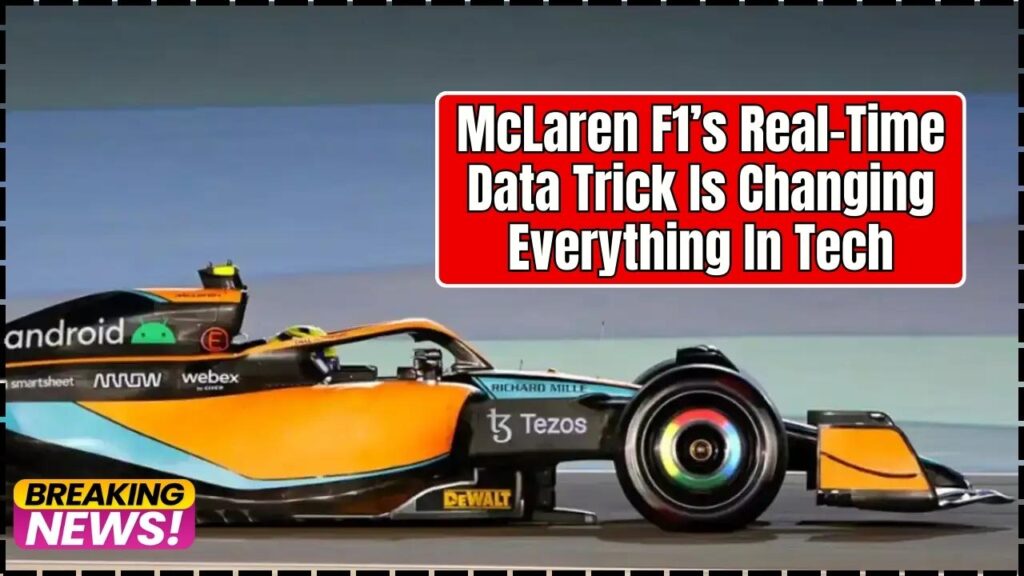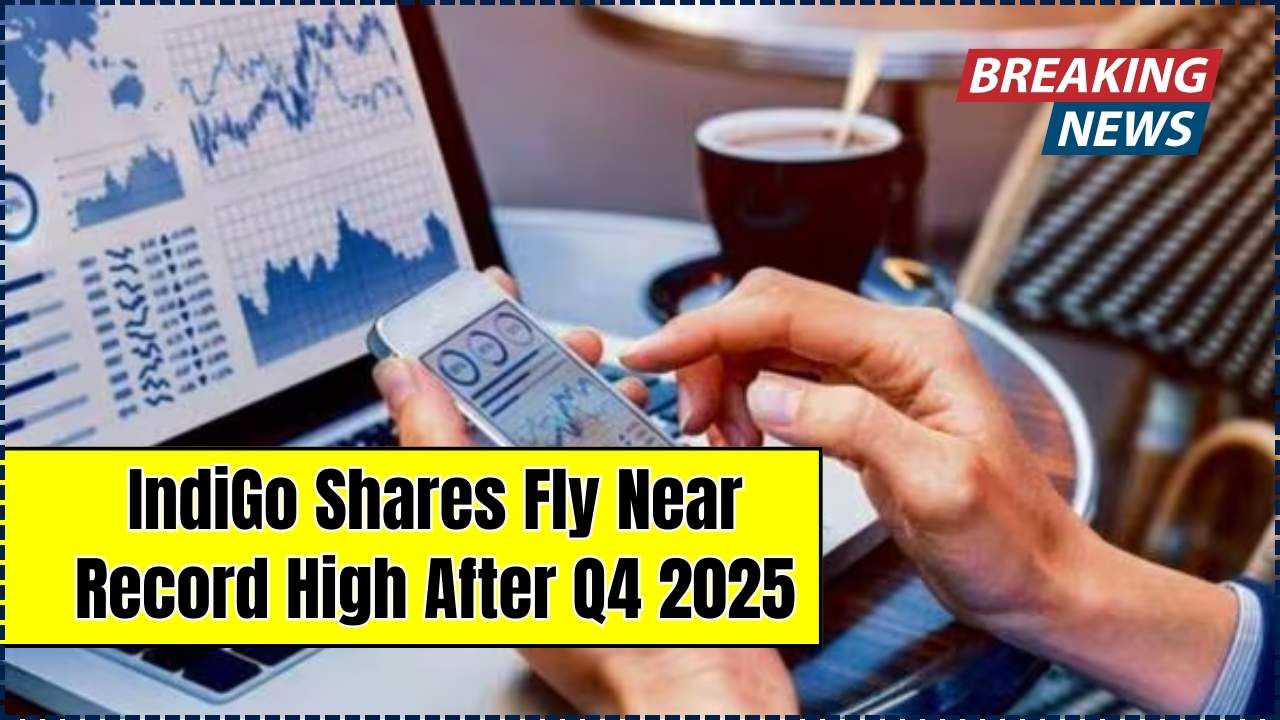McLaren F1’s Real-Time Data Trick: In the high-octane world of Formula One, every fraction of a second can determine victory or defeat. But beyond the roaring engines and lightning-fast pit stops, McLaren F1 has mastered a different type of speed: real-time data analytics. This cutting-edge approach, developed to sharpen race-day strategy, is now creating ripple effects across multiple sectors—from healthcare and manufacturing to cloud computing, transportation, and even public safety.

At its core, McLaren’s approach is simple but powerful: collect massive amounts of sensor data, analyze it instantly, and use it to make smarter decisions faster. Each McLaren F1 car operates like a rolling data center, equipped with over 300 sensors that collectively generate more than 1.5 terabytes of data per race weekend. This real-time telemetry enables rapid insights into every aspect of car performance and driver behavior. But what’s truly revolutionary is how this motorsport innovation is now reshaping global industries.
McLaren F1’s Real-Time Data Trick
| Feature | Details |
|---|---|
| Core Innovation | Real-time data analytics powered by 300+ F1 sensors |
| Industry Impact | Healthcare, manufacturing, aviation, transportation, cloud computing, cybersecurity |
| Data Throughput | 1.5 TB generated per race weekend per car |
| Technology Partners | Dell Technologies, Google Cloud, Cisco, Alteryx, Darktrace |
| Official Source | McLaren Technology Innovation |
McLaren F1 has taken a tool designed to chase lap times and turned it into a global business innovation engine. From hospital wards to production floors and cloud servers, their real-time data analytics ecosystem proves that speed, when paired with insight, transforms everything.
Whether you’re a startup founder, enterprise CIO, or health tech innovator, McLaren’s model offers a clear blueprint: monitor more, analyze faster, and respond smarter. This isn’t just the future of motorsport—it’s the future of smart business.
How McLaren Turns Speed Into Data, and Data Into Speed
Real-Time Monitoring From Track to Cloud
Every McLaren F1 car is embedded with hundreds of sensors monitoring a vast range of data points, including:
- Tire temperature and grip levels
- Engine RPM, throttle, and braking efficiency
- Aerodynamic loads and G-force stress
- Driver biometrics, including heart rate and respiration
These data points are captured in milliseconds, sent via secure telemetry links to McLaren’s mission control rooms, and analyzed by AI-driven software platforms.
Strategic Decisions in Real Time
With this setup, McLaren can instantly adjust race strategies. For example:
- Spotting early tire degradation to schedule pit stops proactively
- Detecting performance anomalies before mechanical failures occur
- Optimizing fuel mix and engine mapping for track conditions
According to Dell Technologies, these rapid insights can cut lap times by 0.2–0.3 seconds, which is often the difference between pole position and mid-grid.
From Racetrack to Hospital Room: McLaren F1’s Real-Time Data Trick
McLaren in Healthcare
In collaboration with UK hospitals, McLaren Applied has adapted its real-time telemetry platform to monitor patient vitals continuously. These systems:
- Track heart rate variability, oxygen saturation, and movement
- Use AI to flag anomalies before they become emergencies
- Enable earlier intervention, improving survival rates and reducing ICU load
A Wired report found this tech cut emergency response time by 40% and reduced complications in post-surgical patients by up to 25%.
Smart Hospitals on the Horizon
Hospitals are now integrating McLaren-derived analytics dashboards to:
- Improve triage accuracy in emergency rooms
- Monitor chronic patients remotely
- Manage resource allocation based on real-time patient loads
Racing to Revolutionize Manufacturing
Lessons from the Pit Stop
GlaxoSmithKline (GSK) took inspiration from F1 pit crews to streamline production lines. Working with McLaren, they applied telemetry principles to:
- Reduce packaging line changeover times by 60%
- Increase productivity by more than 20 million units annually
McLaren’s agile workflow and data monitoring turned bottlenecks into breakthrough opportunities (Wired).
Broader Industrial Applications
Other industries are also adopting this model:
- Automotive factories now track robotic arm performance in real time
- Pharmaceutical firms monitor fluid temperatures and pressures with predictive AI
- Smart grid operators apply telemetry to detect outages before they occur
Cloud Computing + AI = Data Mastery at Scale
Partnering with Google Cloud
To process massive telemetry loads, McLaren relies on Google Cloud’s infrastructure. During a race, the system can:
- Simulate 10,000+ strategy scenarios in under 60 seconds
- Rank options based on weather, tire wear, and competitor behavior
- Feed strategy recommendations to the pit wall in real time
These capabilities are now being used by:
- Retailers modeling supply chain risks
- Banks forecasting fraud threats
- E-commerce platforms personalizing offers at checkout
Ensuring Security With Cisco and Darktrace
Real-time analytics are only useful if they’re secure. McLaren protects its data systems with:
- Cisco’s encrypted communications and threat detection tools
- Darktrace’s AI-based anomaly detection
These tools help:
- Stop ransomware before it spreads
- Prevent spoofed telemetry attacks
- Protect IP during cross-border data exchanges
- Banks, telecom firms, and government agencies are replicating this exact model.
The Full Stack Behind McLaren’s Innovation Engine
Hardware: Sensor Arrays & Edge Processing
cars gather telemetry using devices that measure:
- Motion (accelerometers, gyroscopes)
- Temperature and pressure (thermal and piezoelectric sensors)
- Biometric feedback (ECG, EMG, pulse oximetry)
These are paired with edge computing nodes that preprocess data onboard before transmission.
Software: Alteryx, BigQuery, and ML Models
- Alteryx: Used for intuitive, no-code predictive workflows
- BigQuery: Enables real-time querying of massive telemetry databases
- Custom ML models: Trained on decades of racing and operational data for fast, accurate insight
What Businesses Can Learn From McLaren’s Data Playbook
For Startups
- Track everything: Even small firms can now install basic sensors and collect performance data
- Analyze early and often: Start with free tools like Google Sheets + AI plugins
- Iterate like a race team: Test, review, and adjust processes weekly, not quarterly
For Enterprises
- Create mission control centers: Centralize dashboards for operations and logistics
- Run simulations: Use cloud-based AI to test scenarios before investing capital
- Train staff on analytics: Upskill your team in data fluency for better strategic decisions
FAQs On McLaren F1’s Real-Time Data Trick
How much data does McLaren process per race?
Over 1.5 TB per car, analyzed live and archived for long-term insight.
Is McLaren’s system proprietary?
While core tech is proprietary, many platforms (Alteryx, Google Cloud) are available to the public.
Are there sectors where this doesn’t work?
Not really—any operation involving real-time variables can benefit from telemetry analytics.
What’s the cost of implementation?
For SMEs, it can start under $10,000 using open-source tools and cloud credits. Enterprise builds may cost more, but ROI is strong.
How soon can results be seen?
Most McLaren-modeled deployments show measurable results in under 6 months.






